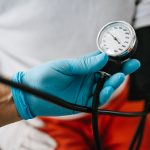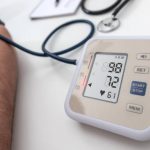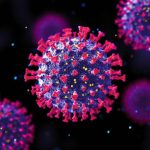The ONE organ responsible for high blood pressure.
Treatment for High And Low Blood Pressure: A Must Know!

What is blood pressure?
Blood pressure is the force applied by the blood over the inner walls of the arteries. Although the average blood pressure for a person remains constant, it shows minor fluctuations throughout the day declining while relaxing and momentarily increasing while being excited or under stress.
An increase in resting blood pressure can scar, stiffen, or harden the arteries.
Blood pressure is written as systolic and diastolic values.
Hence, BP 120/80 mm Hg means 120 is the systolic number, and 80 is the diastolic number.
What is a dangerously low blood pressure?
A sudden fall in blood pressure can be dangerous. A change of just 20 mm Hg a drop from 110 mm Hg systolic to 90 mm Hg systolic, for example can cause dizziness and fainting. And big drops, such as those caused by uncontrolled bleeding, severe infections or allergic reactions, can be life-threatening.
What is the average normal human blood pressure?
As a general guide: ideal blood pressure is considered to be between 90/60mmHg and 120/80mmHg. high blood pressure is considered to be 140/90mmHg or higher.
Signs and Symptoms of High Blood Pressure
High blood pressure may not have any symptoms and so hypertension has been labeled "the silent killer." Longstanding high blood pressure can lead to multiple complications including heart attack, kidney disease, or stroke.
Some people experience symptoms with their high blood pressure. These symptoms include:
- Headache
- Dizziness
- Shortness of breath
- Blurred vision
- The Feeling of pulsations in the neck or head
- Nausea
- Quit smoking
- Lose weight
- Avoid alcohol or at least limit the intake
- Eat a low-sodium and low-fat diet such as the DASH diet
- Avoid too much stress
- Eat foods rich in potassium, magnesium, and calcium such as bananas and milk
- Regular monitoring of blood pressure after reaching the age of 35 years
- Practice meditation and other stress-relieving exercises
- Cut back on caffeine
- Diuretics
- ACE inhibitors
- Alpha-blockers
- Beta-blockers
- Calcium channel blockers
- Vasodilators
- Consume lots of fluids
- Limit alcoholic drinks
- Stay hydrated, especially during hot weather or during viral flu
- Drink more nonalcoholic drinks
- Exercise regularly to encourage blood flow
- Avoid sitting or standing quickly
- While rising, take care to sit upright for a few seconds and then get off the bed
- Stay away from heavy lifting
- Avoid standing still for a prolonged time
- Avoid straining while passing stools
- Avoid prolonged exposure to hot water such as sauna, hot water springs, and spas
- Compression stocking covering the thigh and calf restricts the blood flow to the lower part of the body
- Try eating smaller, more frequent meals to avoid post-meal dizziness
- Any consumption of over-the-counter medications should be reported to the physician.
- Shortness of breath
- Chest pain
- Back pain
- Numbness/weakness
- Change in vision
- Difficulty speaking









